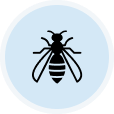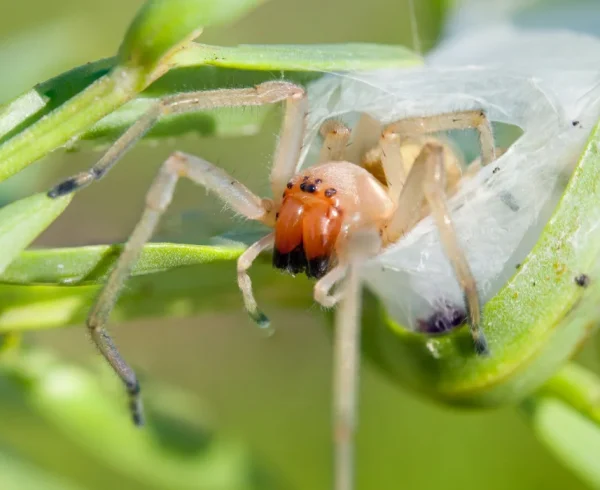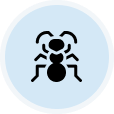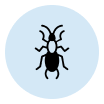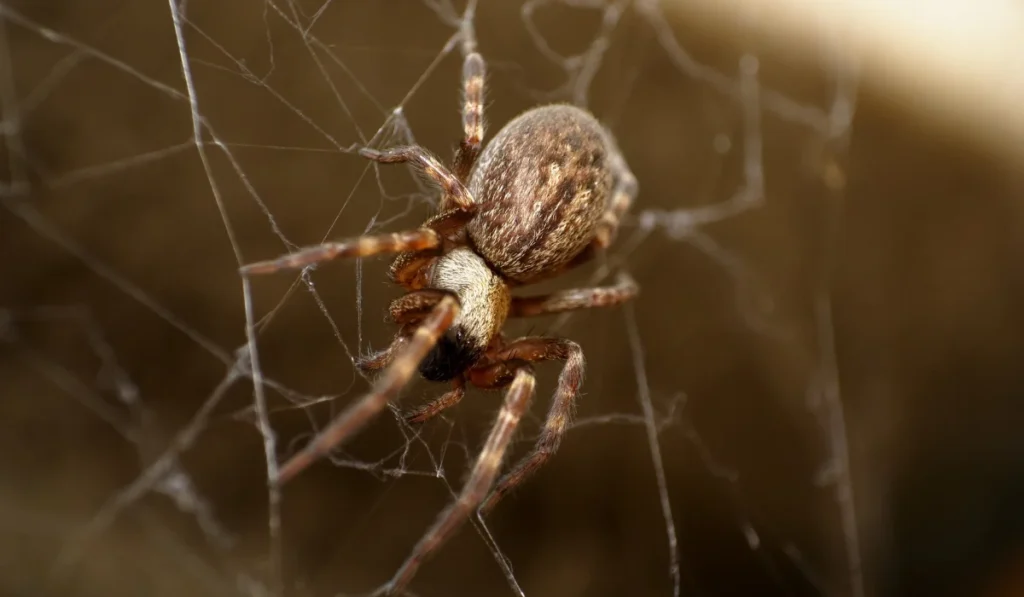What makes yellow sac spiders a frequent visitor in Californian homes? These tiny arachnids intrigue residents and arachnophiles due to their nocturnal habits and distinctive silk sacs.
As urban development changes their habitats, encounters with yellow sac spiders become more frequent. Keep reading to discover what you can do when encountering them.
Key Takeaways
- Yellow sac spiders are small, pale yellow spiders found in homes and gardens, known for their nocturnal hunting behavior.
- These spiders prefer to hide in high corners, crevices, and leaf litter, creating silk sacs for daytime rest.
- Their bites are generally mild, causing localized irritation, but can occasionally lead to more severe reactions.
- Regular pest control and sealing gaps in your home can help prevent yellow sac spider infestations.
What Are Yellow Sac Spiders?
Yellow sac spiders are a group of small arthropods known for their distinctive appearance and hunting behaviors. They are often found in homes, gardens, and outdoor spaces. Their bites can occasionally cause mild reactions in humans.
Physical Characteristics
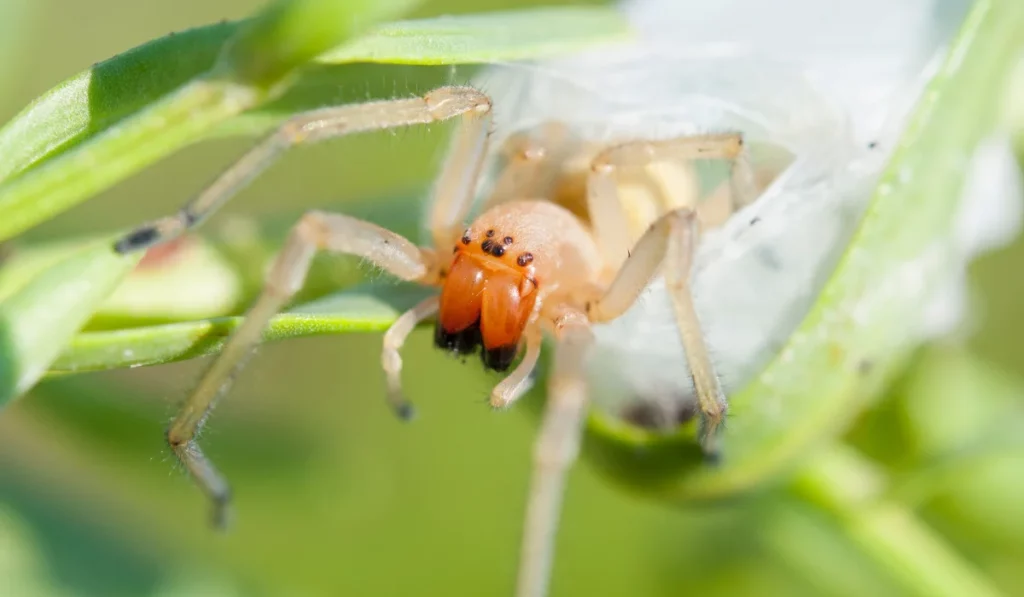
Yellow sac spiders are known for their light yellow or beige color. These spiders are relatively small, usually measuring 0.2 to 0.39 inches. A prominent feature is their oval cephalothorax, which houses their eyes and mouthparts. The abdomen appears slightly darker, and their legs are long and thin.
Common Habitat
These spiders are highly adaptable. Indoors, they are often spotted in high corners, ceilings, and crevices. They also like to hide in closets or behind decorations. In the outdoors, they prefer gardens, under leaf litter, or inside rolled leaves.
In California, the mild climate provides a suitable habitat for them year-round. They do not live within webs but create silk sacs under leaves or in various concealed locations where they rest during the day.
Diet and Hunting Behavior
Yellow sac spiders are nocturnal hunters with a diverse food source of other small arthropods. They do not depend on webs to catch prey. Instead, they seek out and immobilize prey by injecting venom through their fangs. It is potent enough to immobilize insects like flies, beetles, or even small moths.
Behavior Patterns
At night, yellow sac spiders become more active, searching for food and mates. During daylight, they remain in their silk sac retreats. They are known to have a quick temper and bite when threatened or accidentally disturbed. They shed their exoskeleton to grow several times throughout their life.
Species of Yellow Sac Spider in California
In California, yellow sac spiders are primarily represented by two species in the genus Cheiracanthium. Here’s a quick comparison of C. inclusum and C. mildei:
| Species | Native Region | Typical Habitats | Notable Behavior | Bite Effect |
|---|---|---|---|---|
| Cheiracanthium inclusum | North America | Outdoors, gardens | Active nighttime hunter | Minor irritation |
| Cheiracanthium mildei | Europe | Indoors in cooler months | Seeks warmth, less likely to bite | Generally harmless to humans |
Are Yellow Sac Spiders Dangerous?
Yellow sac spider bites are generally not lethal but can be painful and irritating. The venom often causes localized reactions such as redness, swelling, and itchiness. For most people, they resolve within a few days without serious complications.
Though rare, a yellow sac spider bite can occasionally cause a mild skin lesion, but this is usually less severe than the necrotic lesions associated with brown recluse spider bites.
Although their bite is less venomous than black widow spiders, it can still cause discomfort, making awareness important. If bitten, cleaning the affected area and monitoring for unusual symptoms like persistent pain or spreading redness is wise.
In rare instances, a painful bite might need medical attention to prevent further complications. Always consult a healthcare professional if concerns about spider bites arise.
How to Identify Signs of Yellow Sac Spider Infestations
To effectively recognize a yellow sac spider infestation, it’s important to familiarize yourself with several key indicators.
Here are some signs to help you spot the presence of them from other house spider species:
| Signs | How to Spot It |
|---|---|
| Egg Sacs | White, silk-like sacs in corners, window sills, or basements. |
| Spiderlings | Tiny yellow spiders near egg sacs, often scattered in garages or attics where they emerge. |
| Webbing | Sparse silk webs that are less dense in corners of walls or around windows. |
| Adult Spiders | Adults often wander at night near light switches or wood piles. |
| Shed Exoskeletons | Tiny, translucent exoskeletons from molting in secluded areas like basements and undisturbed places. |
How to Get Rid of Yellow Sac Spiders
Yellow sac spiders are quite common spiders in California homes. They hide in small nooks and crannies, making regular pest control important.
Here are some proactive steps homeowners like you can take:
- Close gaps around doors, windows, and other potential entrances with caulk or weather stripping.
- Trim back any plants or bushes near your home’s exterior walls. It reduces areas where spiders can enter.
- Keep spaces tidy and regularly remove piles of clothes, papers, and other objects where spiders might hide.
- Vacuum regularly to remove webs, egg sacs, and spiders in corners and under furniture.
- Place these traps in areas where spiders are likely to travel, like along baseboards or behind furniture.
- Switch outdoor lighting to less attractive low-pressure sodium vapor lights to help repel them.
When infested, reaching out for a free quote from a verified central pest control company might be necessary. They offer professional treatment options.
When to Call Pest Control
Not every sighting of a yellow sac spider means it’s time to panic. Sometimes, a spider or two can be taken care of with a DIY approach. But many sightings in your home might suggest a deeper issue.
At Simple Pest Management, our exterminators can help assess the situation and offer targeted solutions. These can prevent the growth of spider numbers in your home. Call today for a free estimate wherever you are in Southern California.


